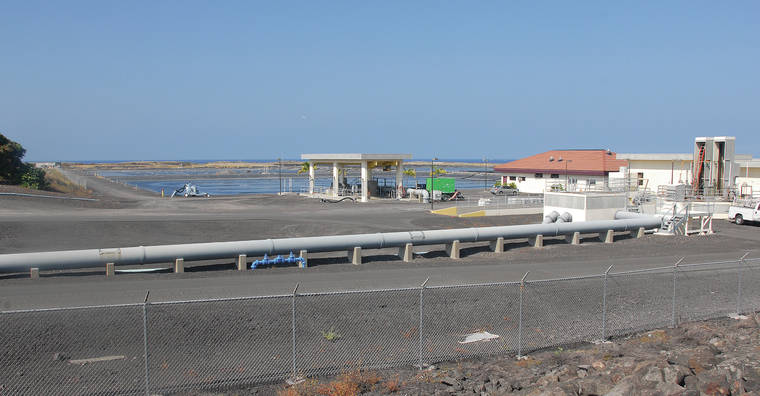Kealakehe Wastewater Treatment Plant upgrades delayed
KAILUA-KONA — Completion of upgrades to the Kealakehe Wastewater Treatment Plant to produce R1 recycled water and the ability to move that water to customers has been pushed back “significantly.”
“Most of the answers are ‘I don’t know and it’s going to be later than we thought,’” Department of Environmental Management Director Bill Kucharski told Environmental Management Commission members during their monthly meeting Wednesday at the West Hawaii Civic Center.
The R1 upgrade, which will render the system capable of producing water safe for public irrigation, was supposed to be finished by the end of 2020, he said. That date is now off the table as a mandated review for National Historic Preservation Act Section 106 compliance is holding up the process that’s needed to finalize the project’s environmental impact statement (EIS) and get work going.
“There’s a new process from DOH (Department of Health) that if SRF (State Revolving Funds) are utilized that you don’t do any intrusive measures until such time as the 106 and cultural issues are resolved,” Kucharski said. “What that does is it stops us.”
With the likelihood of, as of right now, not being able to start construction until 2021, R1 water will not be available for at least two years thereafter. Kucharski said it’d likely be 2023 before R1 water can be moved to the wetlands and the soil-aquifer treatment system or nutrient reduction system, he said.
Like dominoes falling, that means the second phase of the project, building out and connecting pipelines and other infrastructure to move the water to large-consumption users, won’t get started on time. Moving the R1 water north to Kohanaiki Golf Club, which will be one of the initial users, won’t occur until 2023. Water availability for Honokohau Harbor may not be until the first quarter of 2024.
“We are looking at two- to three-year delays because we have to stop everything. We cannot move … we cannot proceed, we cannot finalize the EIS that we have for Kealakehe until such time as we get the 106 finalized,” Kucharski said.
In March, shortly after the publication of the project’s draft environmental impact statement, engineers with Brown and Caldwell held an informational meeting in which attendees were told the transition to R1, the project’s first phase, should be ready by the end of 2020, and the second phase sometime in 2022.
“This is not the most optimistic schedule,” Kucharski said. “I’m hopeful that this will get pushed back by a year or two, but this is something that at this point in time we are looking at significant delays primarily caused by the new standards and new requirements for the cultural.”
Those expanded requirements, he said, are backing up the State Historic Preservation Division, which is tasked with conducting the 106 compliance review. The review is supposed to be completed within 90 days of publication of a draft EIS.
“However, they’re a year backed up before they can get to it,” Kucharski told commissioners. “So, they say as soon as your at the top of the pile we’ll give you an answer in 90 days.”
Kucharski clarified after the meeting, “I don’t have an objection to the process, it just the fact is it’s going to be slower than we’d like it be, and I can live with that as long as I’m not blamed for being late on something that I can’t control.”
The backlog varies by island and type of review, but on average reviews take about six months, according to Alan Downer, SHPD administrator. He said the volume of work exceeds staff capacity, and that SHPD has vacancies.
“SHPD continues to recruit to fill vacant positions. We also work with sponsors to try to identify priority projects, and work to address those that are most pressing or which pertain to emergencies of various sorts, e.g., housing/homelessness, disaster response/recovery and preparedness,” said Downer.
In an attempt to get the ball rolling in the meantime, even with the no-intrusive work requirement amid the Section 106 review, Kucharski said the department is looking at whether it can undertake such work by hiring a non-SHPD archaeologist.
“But that has to be determined,” he said. “That is something we’ll have to make a request on.
“I don’t know what to say, other than this is not something that I like. And I don’t even want to go into the cost. It started at $50 million and that is not the number (anymore),” Kucharski told the commissioners in closing discussion on the matter.
Kucharski, reached later Wednesday, declined to elaborate further on cost ramifications.
“This would result in a cost increase to be determined,” he said.


